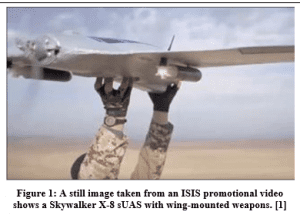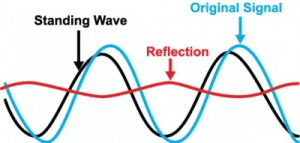Once relegated to the skilled thumbs of a hobbyist or teenager with a Styrofoam toy airplane in the backyard, small Unmanned Aircraft Systems (sUAS) have become accessible to a much broader audience. With the advent of brushless electric motors and high energy density lithium batteries, the consumer sUAS market has experienced unprecedented growth. Advances in electronics and optical technologies while increasing the affordability of a system has further fueled the market.
This growth of consumer sUAS has enabled the average person to shoot aerial photographs and video, capture extreme sports moments, and enter the sport flying hobby with aircraft that are electronically stabilized and considerably less expensive to own and operate than a decade ago. However, as with all new technology, there is a negative impact. For sUAS, this downside is the potential for use as weapons platforms, privacy violations, endangerment of the public, and interference with manned aircraft.

Detection of the threat is paramount to mitigating the threat of errant sUAS. Current counter-sUAS (C-sUAS) technologies rely on electro-optical (EO), infrared (IR), acoustic, and radio frequency (RF) sensors. EO systems scan the airspace for the visible signature of a sUAS. Laser ranging or laser radar (lidar) are other EO sensors available. EO sensors require direct line-of-sight to the object, and therefore cannot detect sUAS through foliage, behind buildings or other barriers, or during periods of heavy precipitation or fog.
Additionally, lasers pose a threat to human safety due to the potential for eye damage or temporary visual impairment. IR sensors detect thermal signatures of objects. A hot object contrasted with a relatively cool background is easily detected with IR sensors.
Perhaps the most versatile and effective sUAS detection sensors are radio frequency (RF) based. RF sensors include active types such as radar, and passive types such as receivers “listening” for the uplink or downlink signals to/from the aircraft. Active RF sensors (radar) can penetrate light barriers such as foliage, glass, or precipitation (the degree of penetration is dependent on transmitter power and frequency of operation).
NuWaves RF Solutions has developed a wide variety of off-the-shelf RF amplifiers with rich features to support mission-critical CONOPS in telemetry, ISR, and tactical communication systems applications. Frequency ranges are available from UHF through C-band with output power levels ranging from 5 to 100 Watt NuPowerTM PAs and NuPower XtenderTM BDAs are designed, built and tested in-house under NuWaves’ Quality Management System (QMS) certified to AS9100:2016 and ISO 9001-2015 standards, which ensures that each product arrives on-time and defect-free.
Most models are in-stock, and are available for same-day shipment on orders placed before 2pm. NuWaves also boasts a full suite of state-of-the-art design and simulation tools, test and measurement equipment, prototyping equipment and a full-scale production facility to provide custom solutions to your specifications. Contact NuWaves today to extend the range of your communications systems and don’t forget to check out our RF Amplifiers and Frequency Converters.


